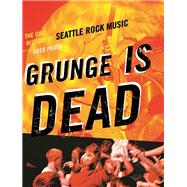
What is included with this book?
Greg Prato is a writer who contributes regularly to All Music Guide, Billboard.com, and Classic Rock magazine. He lives in Wantagh, New York.
The New copy of this book will include any supplemental materials advertised. Please check the title of the book to determine if it should include any access cards, study guides, lab manuals, CDs, etc.
The Used, Rental and eBook copies of this book are not guaranteed to include any supplemental materials. Typically, only the book itself is included. This is true even if the title states it includes any access cards, study guides, lab manuals, CDs, etc.
The singer didn’t wait long — upon the first notes of the opening number, he was climbing over the crowd on pipes attached to the ceiling (if my memory serves me correctly — already shirtless, and wearing shorts that were completely covered in silver electrical tape), before dropping himself into the sea of “moshers” below. The guitarist looked like something out of Cheech and Chong, with a full–on beard, and his eyes seemingly constantly closed — as if he were reaching a state of nirvana playing monstrous Sabbathy riffs. The bassist’s large mop of curly hair bobbed in time to the music, while the drummer bashed out some impressively complex yet primal beats. This, my friends, was my introduction to the mighty Soundgarden.
Needless to say, soon after, I was a major convert, buying just about every Soundgarden recording that I could get my hands on, and reading all the interviews on the band that I could gather. And in most of the articles, it was mentioned that there were other similarly styled bands from Soundgarden’s hometown — Seattle — that were on their way up the ladder as well. Over the next year or so, it appeared as though each month, there was a new band from the Seattle area to discover — Mother Love Bone, Alice in Chains, Tad, Temple of the Dog, Mudhoney, the Melvins, the Screaming Trees, etc. And of course, when Nirvana and Pearl Jam hit, the rock world had thankfully shifted towards music that was both honest and real. And along with it came the word that would forever be associated with the movement: grunge.
While the movement didn’t turn out to be as long lasting as many figured it would, what it packed into a four–year period (1990–1994) was pretty darn extraordinary. How many songs from this period are still being played on the radio? How many of these albums sound as great today as when they first came out, continue to sell, and are still being discovered by younger generations? I rest my case. It may have only lasted a few years, but for a few brief and shining moments, grunge certainly shifted the direction of culture (and even fashion), and brought in an unmistakable feeling of change — just as the ’60s hippie and ’70s punk movements had.
The original idea for doing this book came about when I was doing a Soundgarden article forClassic Rockmagazine back in 2004. While interviewing the group’s early producer, Jack Endino, he mentioned that almost every single article being written about grunge bands nowadays were by writers who were not from the Seattle area, yet were giving their “revisionist take” on what happened. Which got me thinking … what if a book was comprised of nothing but quotes from the actual people that experienced the movement firsthand, tracing it from its very beginning to its end? In other words, letting them tell the entire story as it unfolded (with only chapter intro paragraphs from yours truly). Nearly 130 interviews later, here we are.